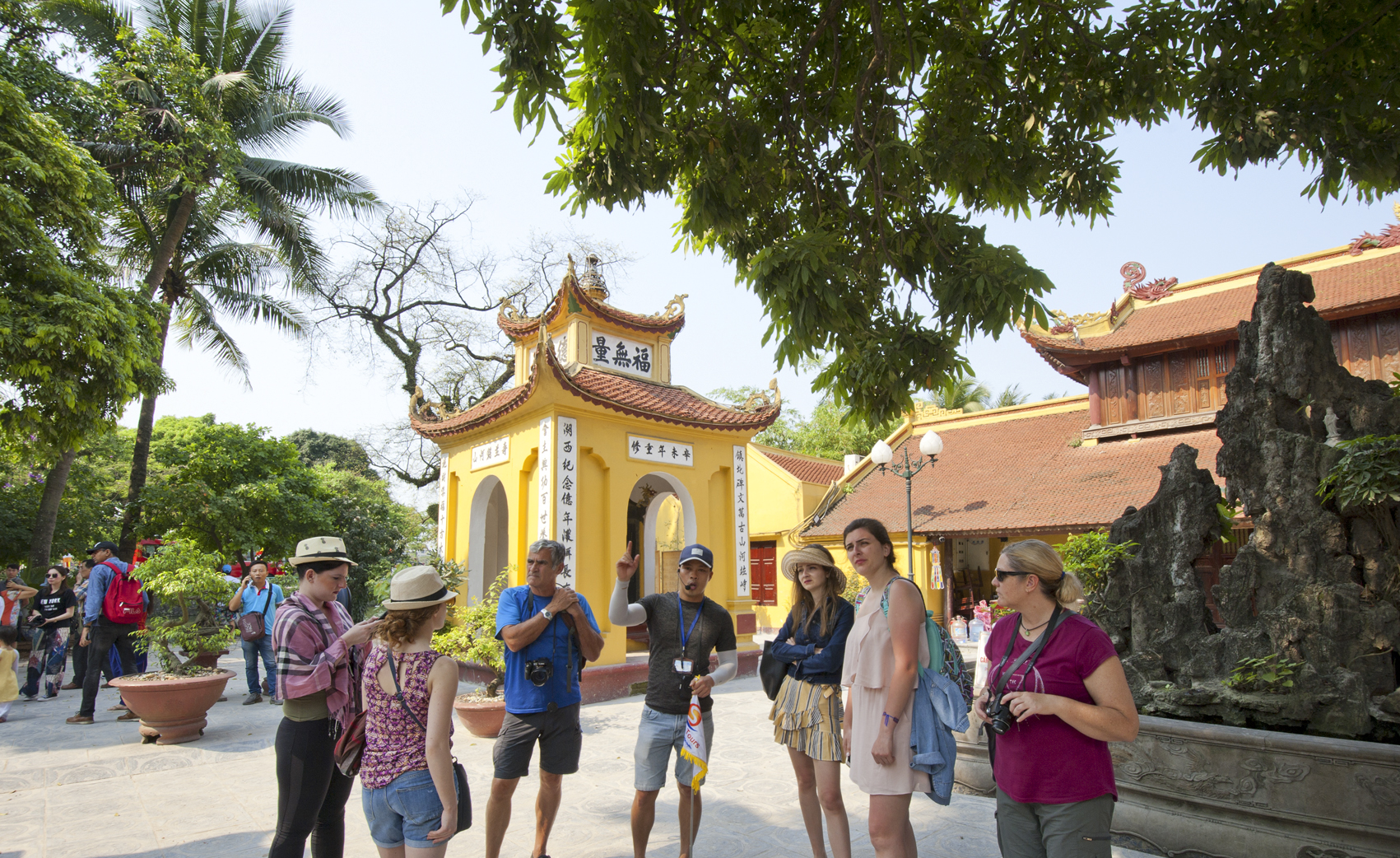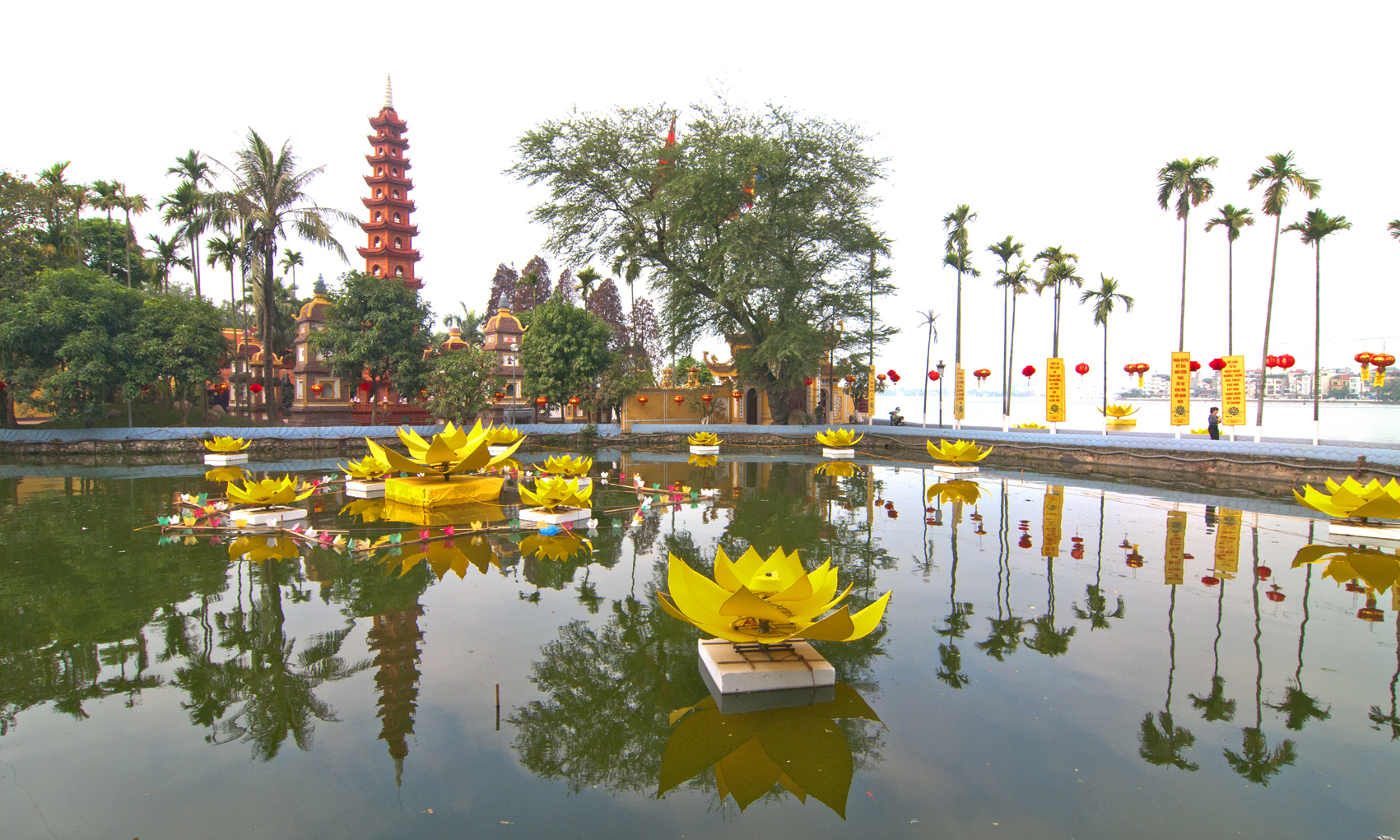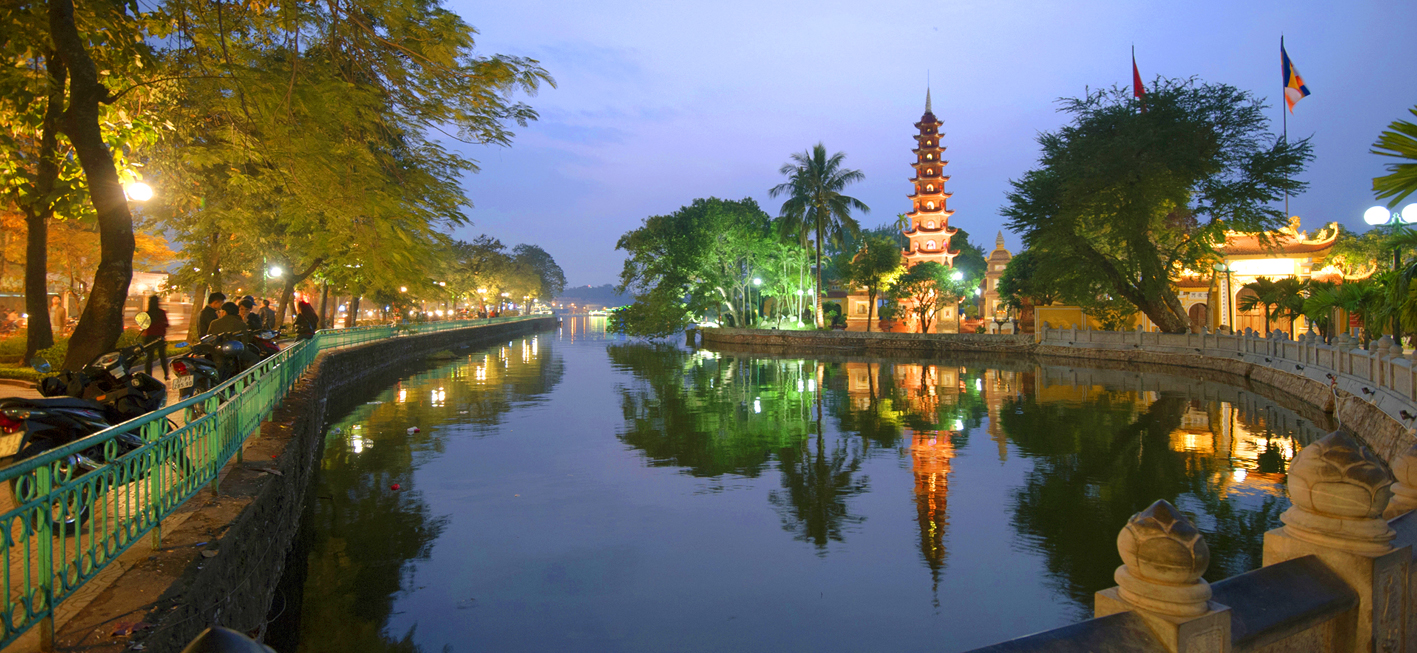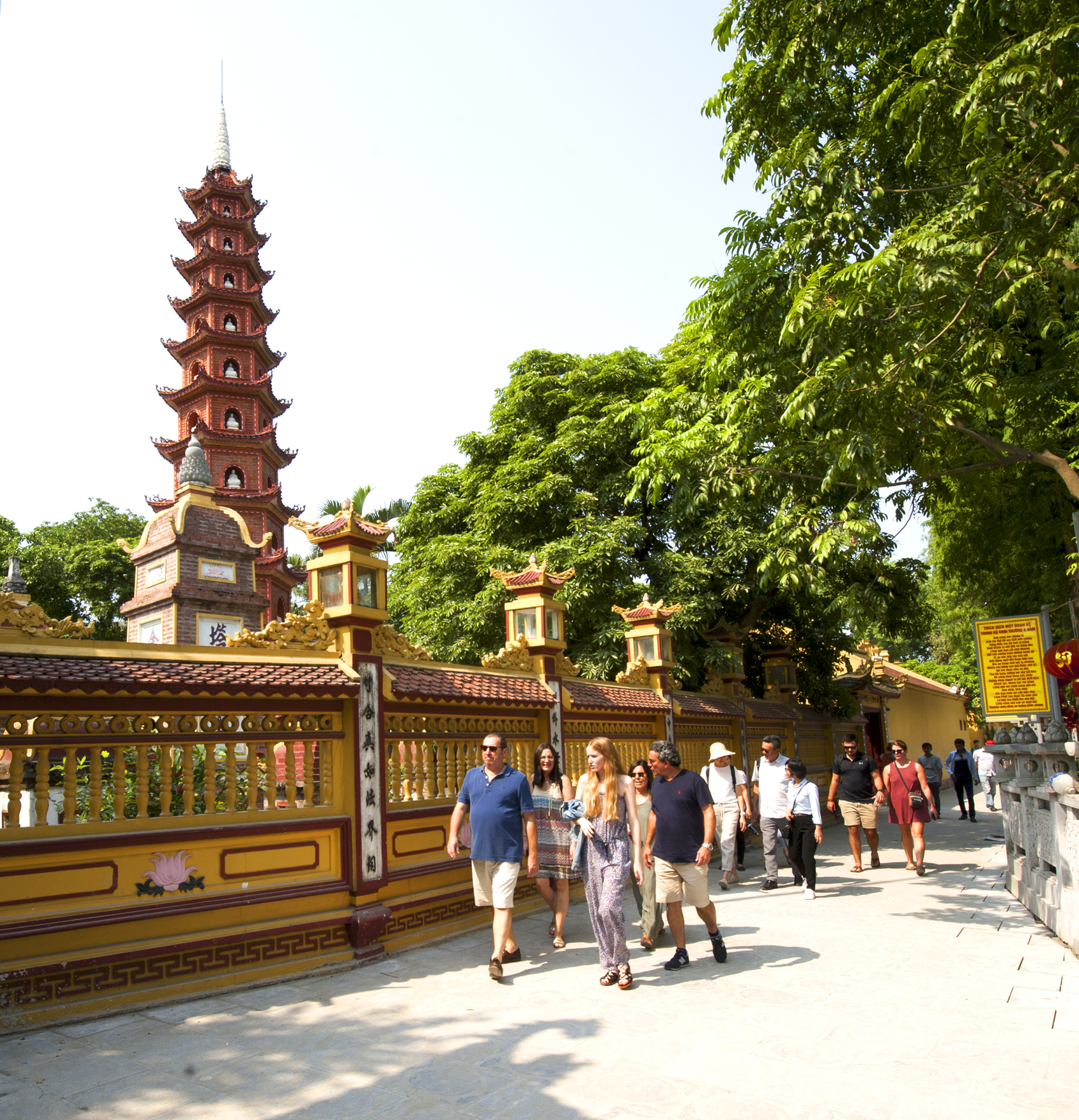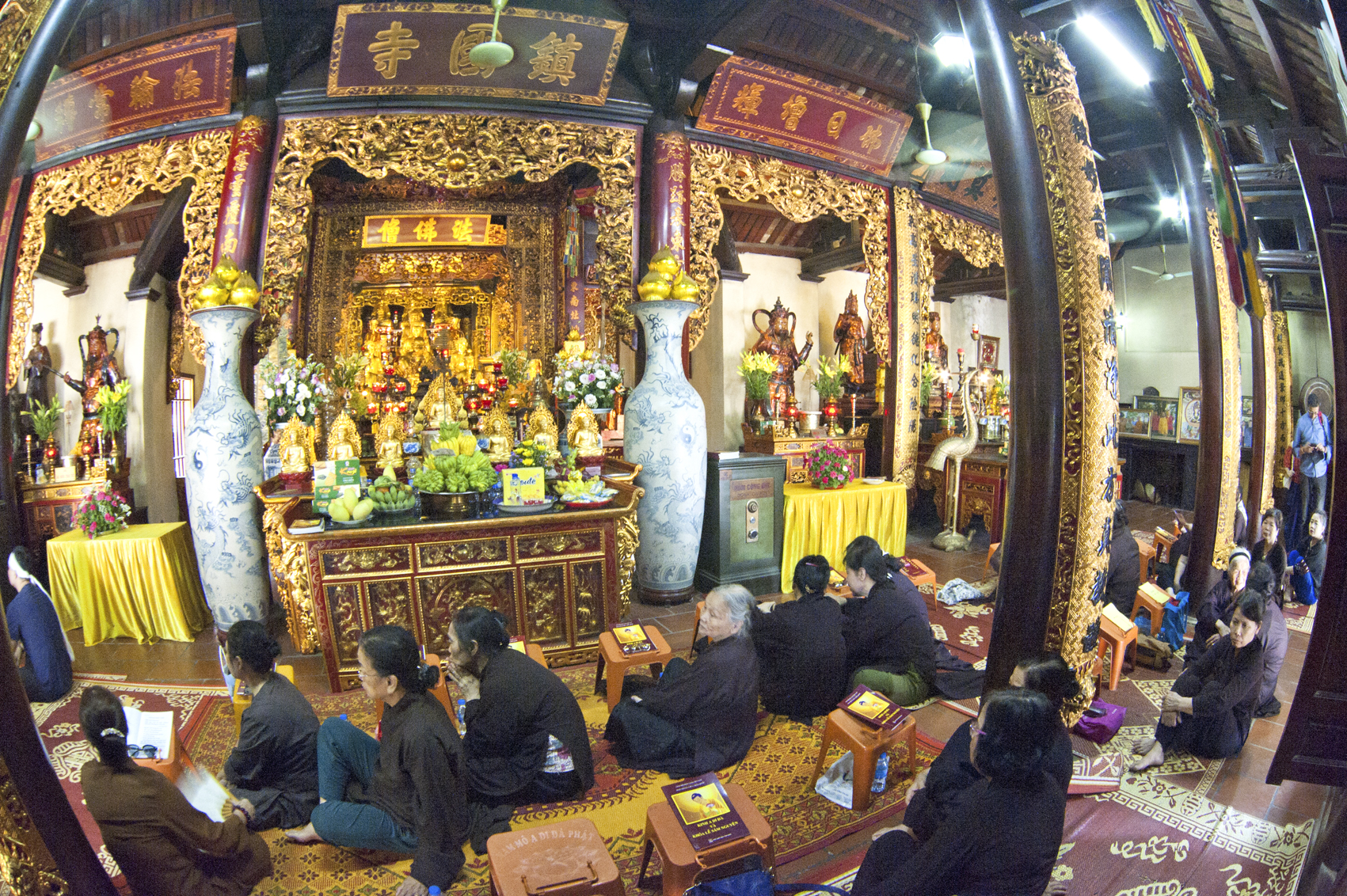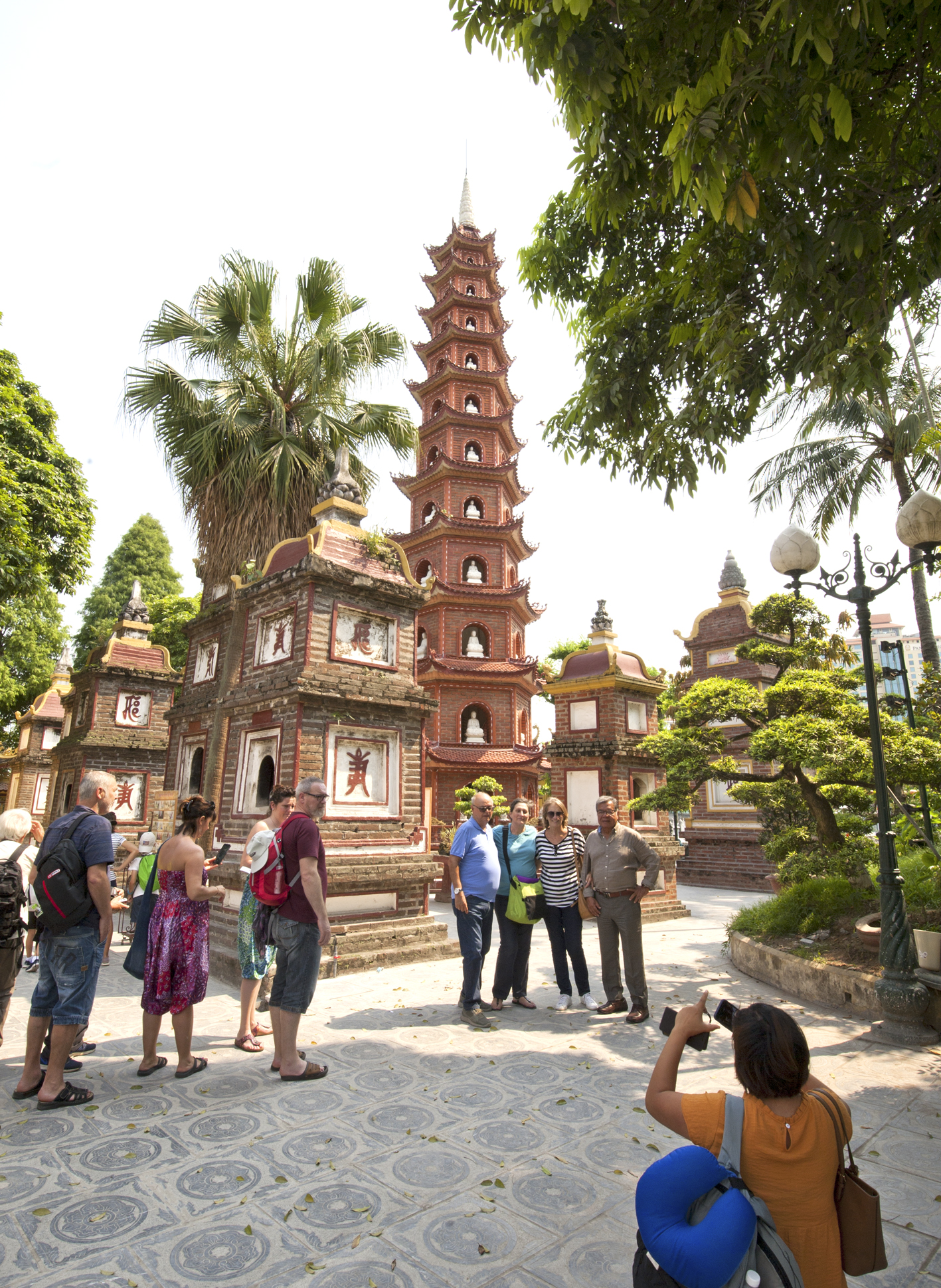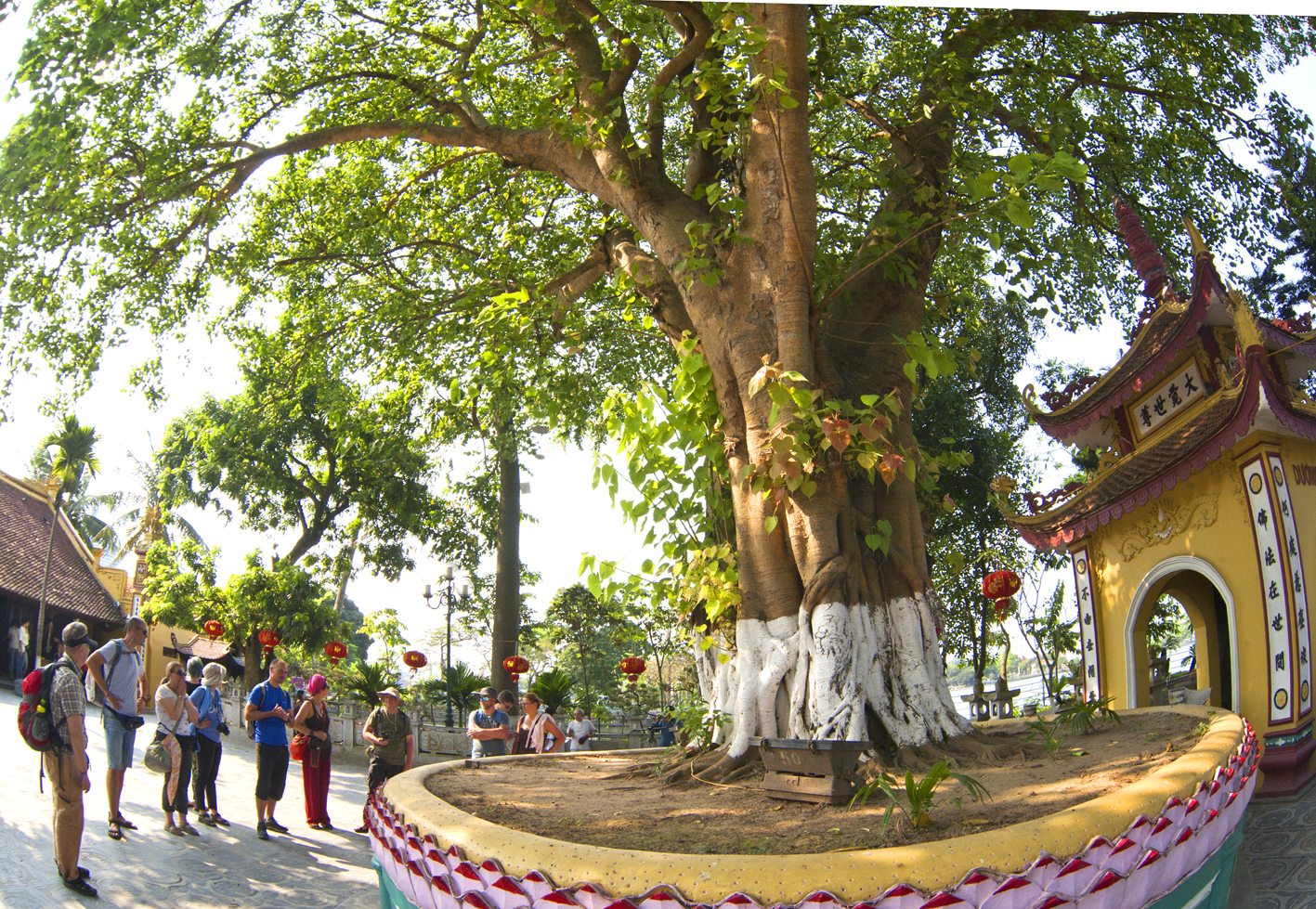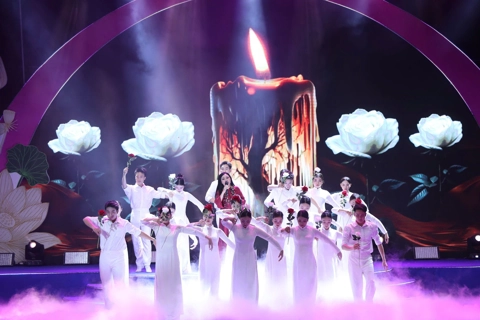Hanoi is always a great destination for Buddhists with many ancient pagodas and temples. Tran Quoc Pagoda is the oldest of its kind in Hanoi, dating back to the 6th century during the reign of Emperor Ly Nam De Dynasty (544 - 548).
With a history of over a thousand years, the pagoda used to be the capital of Buddhism and now considered as a symbol of Hanoi, both in the past and today.
The Buddhist shrine has undergone several changes throughout the years, particularly its renaming from An Quoc to Tran Quoc (protecting the country) by Emperor Le Huy Tong in the 17th century.
|
| Tran Quoc Pagoda is renowned for its deep cultural and Buddhist values, which attracts thousands of visitors from all over the world every year. |
|
| More than 1000 years have passed, the pagoda still preserves its fame and unique characteristics in its architecture in spite of urbanization. |
|
| Thanks to its advantageous location just right beside the dazzling West Lake and on an island which is linked by a bridge between the two most romantic lakes of Hanoi, which are Truc Bach Lake and West Lake, the pagoda attracts a lot of tourists each day. |
|
| Tran Quoc has special architecture which resembles that of ancient temples in Hanoi. It bears the bold Buddist architectural image with many layers of buildings. |
|
| Besides, a fairly complete system of statues is still preserved in Tran Quoc Pagoda. It can be said that Tran Quoc is a small museum storing priceless antiques. |
|
| With the historical and architectural values, Tran Quoc Pagoda is not only worth visiting as a sacred sanctuary of Buddhism attracting countless Buddhist believers; but also an indispensable destination for cultural explorers to Vietnam. |
|
With all historical and architectural values as well as its spectacular scenery, Tran Quoc pagoda is a favorite stop-over of numerous local and foreign pilgrims. |

